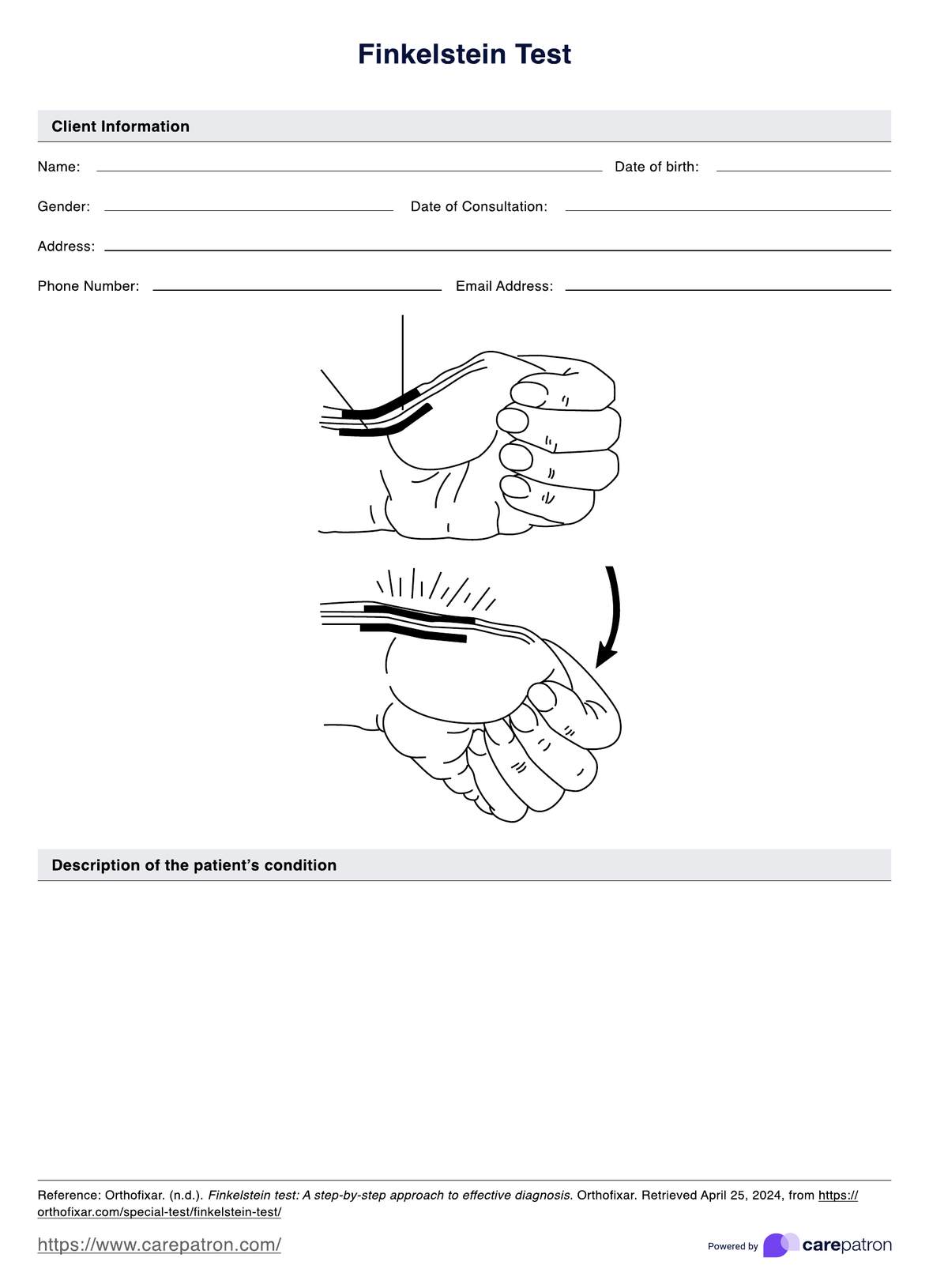The Finkelstein Test is indicated when a patient presents with symptoms such as pain, swelling, or tenderness on the thumb side of the wrist, which may suggest De Quervain's tenosynovitis.

Finkelstein Test
Finkelstein tests are diagnostic maneuvers used to assess for De Quervain's tenosynovitis, a painful condition affecting the thumb and wrist. Learn more.
Use Template
Finkelstein Test Template
Commonly asked questions
The Finkelstein Test is generally considered safe and low-risk. However, in rare cases, it may cause pain or discomfort in the wrist.
A Finkelstein Test template can provide a standardized way to document the test results, ensuring an accurate and reliable diagnosis of De Quervain's tenosynovitis.
EHR and practice management software
Get started for free
*No credit card required
Free
$0/usd
Unlimited clients
Telehealth
1GB of storage
Client portal text
Automated billing and online payments











